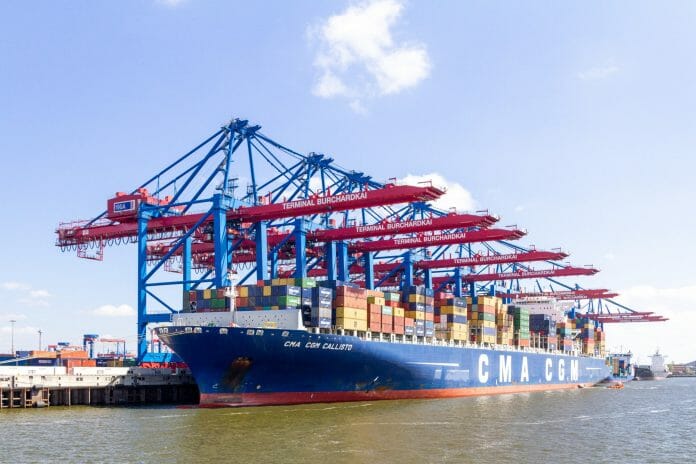By Nazery Khalid,
As the concept of smart cities gains traction, players in the logistics sector are preparing to operate in a fully-digitalised supply chains to support, take advantage of and flourish amid the proliferation of e-commerce in today’s digital economy.
Logistics is the part of the supply chain that features a wide range of activities that facilitate the transportation of goods and raw materials from the point of production to consumption. The logistics sector contains activities such as sourcing, transportation, distribution, storage, warehousing, packaging, repackaging and cargo clearance, plus value adding services such as information management, IT and supply chain management, among many others.
Loosely defined, the term ‘digital supply chain’ refers to the Internet-based and ICT aspects of the supply chain in terms of the assets used and the activities they facilitate. In industry circles, the term is used in discussing the utilization, application and development of advanced high-tech equipment, realtime data, automation, and interconnected systems and solutions that drive improvements in performance, delivery and customer satisfaction in traditional supply chains.
These include the use of artificial intelligence, big data analytics, Internet of Things, predictive analysis, robotics, virtual reality, sensors and a host of other applications and technologies that make up what is known as Industry 4.0, from the first mile to the last mile of supply chains.
Amid the proliferation of automation, technologies and Internet-based solutions in today’s ‘digital revolution’, the focus on trading, doing business and purchasing items on digital platforms is growing by the day.
Volumes of e-commerce and online purchases, and demand for fast deliveries / same-day shipping have increased tremendously since the outbreak of the Coronavirus pandemic earlier this year. The movement control order (MC) and lockdown imposed on governments that curtail face-to-face contacts have driven people in many parts of the world to turn to online platforms to order items and carry out activities such as meetings and learning.
Operating in the digital realm
Keeping up with this trend, many logistics players have stepped up investment and efforts to operate efficiently in the digital realm. The main objectives of doing so are aimed at enhancing connectivity between producers and end-user / markets. Many companies are reliant upon supply chain performance in ensuring they meet their customers’ demands and expectations. As such, they depend on the optimal performance of the supply chains as one of the vital success factors of their business.
In stepping up to the plate to operate in the digital economy and help clients to meet growing demand for online purchases and fast, efficient and cost competitive digital delivery, logistics players are increasingly focusing on :
- Automating processes to enhance efficiency and productivity; reduce costs; eliminate duplication / redundancy of functions, errors and wastage; and increase visibility, safety and security along the supply chains.
- Automating processes to enhance efficiency and productivity; reduce costs; eliminate duplication / redundancy of functions, errors and wastage; and increase visibility, safety and security along the supply chains.
- Automating processes to enhance efficiency and productivity; reduce costs; eliminate duplication / redundancy of functions, errors and wastage; and increase visibility, safety and security along the supply chains.
- Automating processes to enhance efficiency and productivity; reduce costs; eliminate duplication / redundancy of functions, errors and wastage; and increase visibility, safety and security along the supply chains.
- Automating processes to enhance efficiency and productivity; reduce costs; eliminate duplication / redundancy of functions, errors and wastage; and increase visibility, safety and security along the supply chains.
- Automating processes to enhance efficiency and productivity; reduce costs; eliminate duplication / redundancy of functions, errors and wastage; and increase visibility, safety and security along the supply chains.
- Automating processes to enhance efficiency and productivity; reduce costs; eliminate duplication / redundancy of functions, errors and wastage; and increase visibility, safety and security along the supply chains.
- Automating processes to enhance efficiency and productivity; reduce costs; eliminate duplication / redundancy of functions, errors and wastage; and increase visibility, safety and security along the supply chains.
Surfing with the digital wave
In the effort to ‘digitalise’ supply chains to achieve the above objectives and to align them with the e-economy, various aspects need to be looked into. These include investing in the hardware, software and systems needed to automate processes and activities; developing human capital with the skills set to operate efficiently in the digital realm; enhancing awareness amongst players along the chain of the need to step up their game and take a whole-ecosystem approach to digitalising supply chains; and providing a conducive environment to establish a network of interconnected, integrated and interoperable supply chains by way of having the infrastructures, infostructures; and legal and regulatory framework to facilitate e-supply chains.
Supply chain practitioners must be able to comprehensively manage the digital aspects of the supply chains; anticipate the challenges and mitigate the risks involved in digital supply chains; and operate in a new data-driven, realtime platform featuring high levels of connectivity, collaboration, sharing and strategic alliances among the parties
Those who fail to sync their operations and adopt to new technologies and fast-changing technological landscape will run the risk of drowning in the digital wave and be left behind by the rapidly advancing Industry 4.0 momentum. They also stand to lose out on the opportunities presented by the digital economy if they fail to invest in the assets and resources needed to operate in today’s technology-driven economy.
The onus is on them to transform their strategies, operations and even mindsets to undertake digital transformation to eliminate inefficiencies, handle more volumes of business more efficiently, increase revenue, drive cost lower, mitigate disruptions, enhance customer satisfaction and experience, and reap the huge opportunities presented by the challenging but exciting digital economy and digital supply chains.
Nazery Khalid is an ardent commentator of developments in supply chain management and in the logistics and marine / offshore industries. He welcomes feedback at [email protected]









